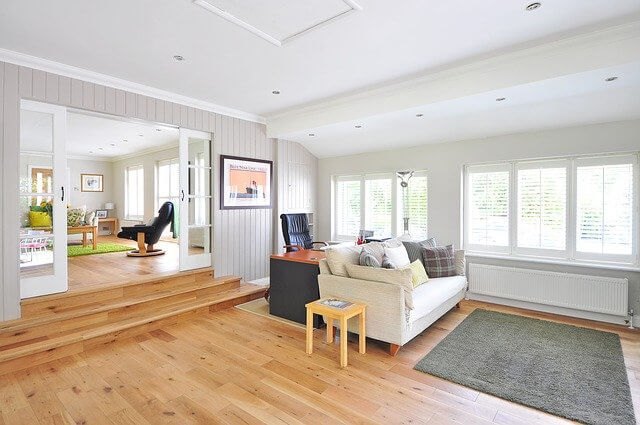Timber Flooring
Timber flooring is one of the most popular and attractive types of flooring. But, they are not good in fire resistance and damp resistance.
Timber flooring is a popular choice for adding warmth and natural character to homes and commercial spaces. It is a durable and long-lasting flooring option. Whether you are renovating your home or designing a new room, timber flooring can provide a beautiful solution for your flooring needs.
Although it is a good flooring option but cannot be used everywhere, as its price is much higher than other floorings, and is often not possible due to the lack of fair quality wood.
The timber floor is to be best suited for areas where the timber is easily available. This is why in our country this floor is mostly used in hilly areas.
They are also used for specific purposes made halls like dancing halls, auditoriums, etc. This floor, as far as possible, should not be used for ground floors but if they have to be, a cover of an impervious material should be provided throughout the area of the buildings below the ground floor in order to prevent dampness.
Read Also: Characteristics of a Good Timber
Methods of Construction
Timber flooring can be provided in the following methods:

- Wooden block floors
- Strip flooring
- Wall plates and sleeper wall flooring
1. Wooden block floors
In this method of construction, at first, a layer of concrete around 15 mm thick is prepared. After the base concrete has fully set and hardened, it is left to dry completely.
Now the concrete base is covered with a layer of mastic asphalt or bitumen and then, the short wooden blocks somewhat thicker like brick are laid over this prepared base.
Generally, the size of the wooden blocks varying from 200 mm*80 mm to 300 mm*80 mm, and the thickness of these blocks are ranging between 20 mm to 40 mm.
In order to bind the wooden blocks together and also to impart resistance to the surface, hot bitumen is poured over the wooden block pavement. The hot bitumen will penetrate the wooden blocks and keep them bonded.
Read More: Comparisons and Differences Between Asphalt and Bitumen
2. Strip flooring
In this case, the base of cement concrete 15 cm thick is laid. While laying the concrete layer, wooden strips trapezoidal in section are embedded in it by maintaining the top level of the strip slightly above the surface of the concrete layer. While embedding, the wider face of the strips is kept embedded. This measure does not allow the strips to be dislodged. Once the cement concrete has fully set, timber planks are nailed straightway to the embedded strips.
While fixing the wooden planks some open space is left between the underside of the planks and the upper surface of the concrete layer. This open space should be ventilated properly either through the air bricks or in a different way.
3. Wall plates and sleeper wall flooring
This type of floor is provided where chances of the rise of dampness are very likely. Timber boards are supported on timber joists which in turn remain nailed to wall plates.
In case the room is very large, intermediate, dwarf walls are constructed to support the joists. Intermediate walls are termed dwarf walls or sleeper walls.
A longitudinal timber piece is fixed on the top of the sleeper walls and timber joists are nailed to this piece. The sleeper walls are generally 10 cm thick and are honey-combed.
In order to prevent the dampness from rising, a 15 cm layer of cement concrete is applied covering the whole area of the floor. D.P.C is applied throughout the width of the wall immediately below the wall plate.
The hollow space between the flooring and the concrete is kept properly ventilated by keeping openings in the main wall above ground level.
These openings are fitted with wire netting to prevent rats and vermins from getting access into the hollow space. Planks used for the boarding may be jointed to each other by tongued and grooved joints, rebated joints, or simple butt joints. Timber to be used for flooring should be of the best quality, well-seasoned, and free from cracks, knots, and other defects.
Read More: